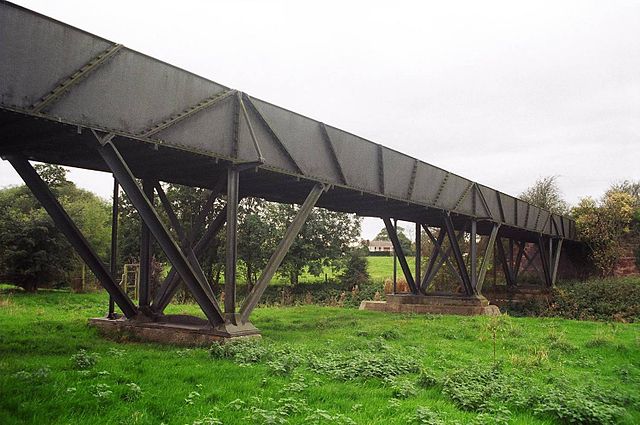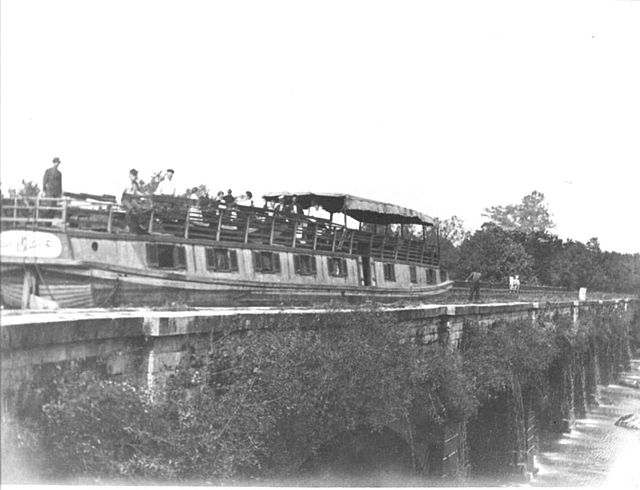The Slateford Aqueduct is a navigable aqueduct that carries the Union Canal over the Water of Leith at Slateford, Edinburgh, Scotland. Completed in 1822, it has eight arches and spans a length of 500 feet (150 m).
Slateford Aqueduct
The view from the towpath
A joint in the iron trough that makes the canal watertight
Navigable aqueducts are bridge structures that carry navigable waterway canals over other rivers, valleys, railways or roads. They are primarily distinguished by their size, carrying a larger cross-section of water than most water-supply aqueducts. Roman aqueducts were used to transport water and were created in Ancient Rome. The 662-metre (2,172 ft) long steel Briare aqueduct carrying the Canal latéral à la Loire over the River Loire was built in 1896. It was ranked as the longest navigable aqueduct in the world for more than a century, until the Magdeburg Water Bridge in Germany took the title in the early 21st century.
Narrowboat crossing the World Heritage Pontcysyllte Aqueduct in Wales
Out-of-use cast-iron Longdon-on-Tern Aqueduct
The Magdeburg Water Bridge seen from the shores of the Elbe
Passenger (packet) boat on the Monocacy Aqueduct of the Chesapeake and Ohio Canal







